Pregnancy eating plan
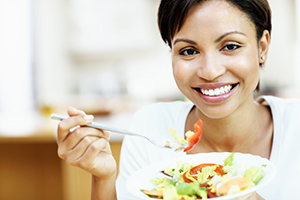
Pregnant women need to eat healthy foods most of the time, while still enjoying the occasional treat. Pregnancy is not a time for deprivation or giving up everything you hold precious and dear. For so many of us, food is a source of great pleasure and to feel as if you need to put your taste buds on hold for 9 months is not only unrealistic, it is also very unkind.
Any pregnancy eating plan needs to include the aim of eating a varied, fresh and interesting diet. Think about the foods you eat in terms of what they will be doing for you and your baby. It won’t be until your second trimester when you will need to increase the amount of kilojoules you have each day and, even then, an extra piece of fruit and a glass of milk will meet these additional daily requirements.
It is the quality and intensity of the nutrients in your diet that count during pregnancy, rather than food “bulk”. You would have heard the term “work smart”; well, pregnancy is a time to “eat smart” and with your head, not just your taste-buds.
The importance of planning
Planning for meals during pregnancy really is the key to good nutrition. Running out of healthy food choices and looking despairingly at an empty fridge are to be avoided at all costs. Make your menu planning easier, by shopping on-line, making lists, or recruiting your partner’s help. When it comes to food and eating well, it is always worth investing some time and energy.
How much food do I need to eat?
Aim to eat 5-6 times a day throughout your pregnancy. If you are not used to eating breakfast, now is the ideal time to start. People who don’t kick-start their day with a healthy meal tend to weigh more and don’t work to their optimum capacity throughout the day. Their retentive memory, recall, concentration and focus all suffer because there isn’t sufficient fuel in their body to feed their brain.
If you are watching your kilojoule intake, avoid thinking that missing breakfast will help you to maintain or even to lose weight. If you do, your body will think you are living in a famine where there is insufficient food available and it will go into starvation mode – i.e. everything you eat will be stored as fat, so instead of your body using up its fat stores, it will retain them. So give your metabolism a boost and eat something nutritious when you get up. Your baby needs it as much as you do.
Foods to relieve pregnancy nausea
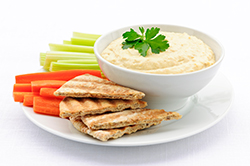
- Simple, easy-to-digest foods that contain some flour and carbohydrates. Bread, toast, crackers, rice and pasta are fine.
- Non-complex, watery broths that contain filaments of meat or chicken and some root vegetables. Don’t serve yourself too much at any one time and stop when you feel you’ve had enough. You are much better off retaining ½ cup of soup in your stomach than vomiting it all back up.
- Avoid eating foods that are high in salt and will make you thirstier. Too much salt leads to water retention and excess swelling. In excessive amounts, it can also increase blood pressure.
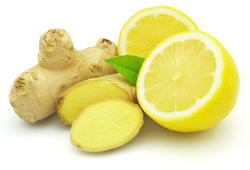
- Ginger is said to work wonders for many women and it won’t do you or your baby any harm. Try the full range available, starting off with some freshly grated, raw ginger seeped in hot water. Sip on this when you feel queasy and can’t face the pantry. Ginger beer or ale, ginger sweets, crystallised ginger and biscuits containing ginger are all good. Try making your own gingerbread biscuits and cake, experimenting with different amounts of powdered/dried ginger.
- A glass of chilled water with a squeeze of fresh lime or lemon juice can be settling. Try munching on some ice chips or even a water-based/cordial ice-block. Lime, raspberry and lemonade are some tried and tested favourites when simply nothing else will do.
- Chilled foods such as jelly, dairy desserts and rice puddings work for some women.
- Sour fruits that activate your taste buds and feel more astringent to the tongue. Green apples, persimmons, grapefruit and oranges can all be effective.
Dealing with cravings
- There is thought to be some biological basis for food cravings during pregnancy. Your body may yearn for foods that will supply it with important nutrients to stay well and to nurture your growing baby.
- Give into your food cravings if they’re reasonable and are for real food. Occasionally, pregnant women will experience Pica which means they will crave and eat non-edible foodstuffs such as Stones commonly known as "odawa" in Kenya. Research shows that these habits have negative side-effects o women's health ranging from parasitic infestations as the harvesting process of the stones is not hygienic. In addition one can also suffer from anaemia and intestinal complications, coal, and dirt. Ingesting these substances is obviously risky and can potentially be lethal to a developing baby (rather let your doctor check your iron levels before you give in to this type of craving).
- Be prepared to move on from even your most adored craving to something completely new and interesting. Different stages of pregnancy make different demands on the body and this is often reflected in what you really feel like eating.
Breakfast
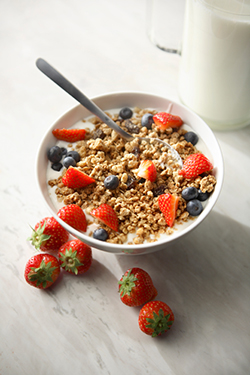
- Muesli with rolled oats, chopped nuts, fruit and grated (green) apple. Aim to use low-fat milk that will supply you with calcium and phosphorus.
- Any quality of whole grain cereal that is low in fat, but high in fibre and essential nutrients. Read and compare nutritional information on the boxes and look for the percentages of sugars and fats and what the RDI (Recommended Daily Intake) is during pregnancy.
- Any grain that resembles its original state is usually a preferable option for a breakfast cereal, e.g. oats and bran have not been processed so much that their nutritional content has been lost.
- Freshly cut fruit with low-fat yoghurt poured over the top. Sprinkle some sesame seeds on for extra B group vitamins. If you can’t access fresh fruit, use frozen, canned or preserved fruit, which – if prepared correctly – will have retained much of their original nutrients.
- Multi-grain toast with a quality spread or a protein topping. Try combinations such as cheese and tomato, avocado and cottage cheese, or bacon and syrup.
- Eggs cooked any way – but make sure they are properly cooked to reduce the risk of contracting salmonella.
- Leftovers are fine as long as they have been stored correctly and not reheated previously.
- Freshly squeezed juice made from at least two pieces of fruit.
Mid-morning snack
Be inventive and break out of your usual snacking routine. Your baby needs to be exposed to lots of different tastes and flavours so it is automatically more receptive when it comes to accepting solid foods.
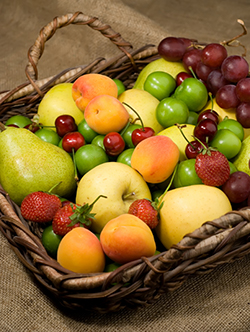
- Aim for fruit, preferably a couple of servings. Wash all fruits thoroughly to remove residual traces of dirt and chemicals. Vary your diet - buy fresh fruit a couple of times a week and add one new fruit, which you don’t generally eat, each week.
- Hard cheese with crackers. Avoid soft cheeses such as brie and camembert. Cheese is a solidified form of milk and a couple of small cubes will provide one quality serving of calcium each day.
- Yoghurt or a fruit smoothie made with some low-fat milk, fresh fruit and ice.
- A handful of dried nuts or dried fruits. Look for dried fruits that are sun dried, rather than dried using sulphur agents. Dried fruit absorb a lot of water in the gut and can lead to excess wind and bloating. So although they taste delicious and it’s hard to stop once you start, go easy. Take some out of the packet and then seal it up again to avoid going overboard.
Lunch
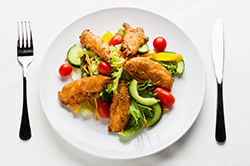
- A quality salad with a variety of greens and leaves. Look for as much colour as you can to combine and fill your plate with living, whole foods. Include some avocado. Wash all salad vegetables very well and store, airtight, in the refrigerator.
- Wholegrain or wholemeal bread with a dairy spread. Margarine or butter is fine and will supply your body with vitamin D, and some essential fats. Lean meat such as chicken, ham, beef or lamb with or without salad is ideal.
- Leftovers are good; especially those containing some source of protein and vegetables. Pasta dishes, risotto, soups, stews, or casseroles are all good options, particularly in the winter months.
- A tin of fish such as sardines, mackerel or salmon with a salad. Follow up with a tub of yoghurt or a glass of milk, a hard cheese or a dairy dessert that would provide another calcium serving.
Late afternoon snack
Similar to morning tea in terms of serving size and food range. Consider morning and afternoon tea as snacks, rather than main meals. They will help to maintain your blood sugar levels at a reasonable level, stave off hunger and help avoid nausea:
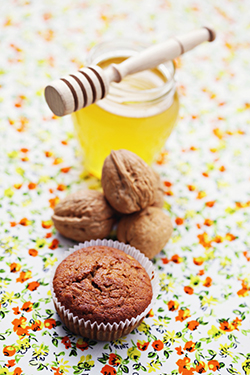
- Freshly squeezed fruit or vegetable juice. Invest in a juicer and experiment with different combinations. Remember, it is the fibre in them that makes us feel full, so without it there can be an intense concentration of kilojoules in every glass. Sip it with a straw and include ice in the glass as well.
- A muffin or bagel spread with some jam or honey will satisfy your mid-afternoon sugar craving. It will also help fuel you through the energy slump that is so common around this time.
Dinner
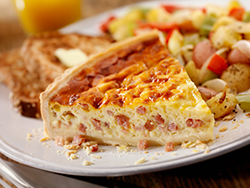
- Home-made soup containing some lentils, split peas, vegetables and a protein source such as meat or chicken.
- An egg dish is fine if you couldn’t be bothered with too much cooking. An omelette, scrambled, poached, boiled or in a quiche, whatever takes your fancy.
- Meat, chicken, fish serve with steamed, seasonal vegetables or a salad.
- For a vegetarian option try baked beans or lentils combined with vegetables to make a nutritious and healthy non-meat meal.
Late night snack
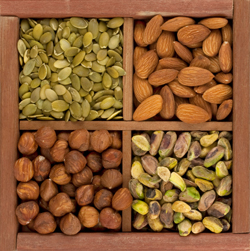
- A warm milk drink mixed through with some malt or healthy additive.
- A couple of biscuits, some cheese and crackers or another piece of fruit.
- A handful of nuts or seeds can satisfy the common desire for crunchy foods, which require some chewing. One serving of stewed or tinned fruit with custard can also satisfy a sweet craving.
Things to avoid
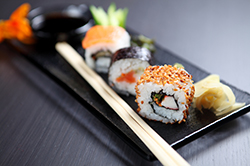
- Any raw or undercooked fish, sushi and seafood needs to be avoided. There is a risk of parasitic infection and contracting hepatitis if they are eaten. Raw meat is also risky.
- Toxoplasmosis is a parasitic infection transmitted in cat faeces and can be contracted by handling litter trays or infected soil. It is very important to wash fruits and vegetables well - they can also be contaminated by infected soil.
- Be diligent about your food-handling hygiene and do not use the same cutting boards for vegetables / fruit and then raw meat.
- Listeria is a bacterium, which can be passed onto your baby. An infection with Listeria in a healthy, fit person does not generally create problems but it can be fatal to a baby while still in the womb. Avoid soft cheeses that have been ripened by mould such as Camembert, blue-veined cheese, Brie and other soft, spreadable cheeses.
- Predatory fish like shark, swordfish and marlin contain mercury, which can be dangerous to you and your baby during pregnancy.
- It used to be thought that pregnant women should eat a lot of liver because it was good for their babies. But we now know that liver can be very high in Vitamin A, which in high levels can be toxic to a developing baby. For this reason pâté and liverwurst are best avoided as well.
Ensure you have soap at your kitchen sink to prompt you to wash your hands immediately before you start preparing food.

